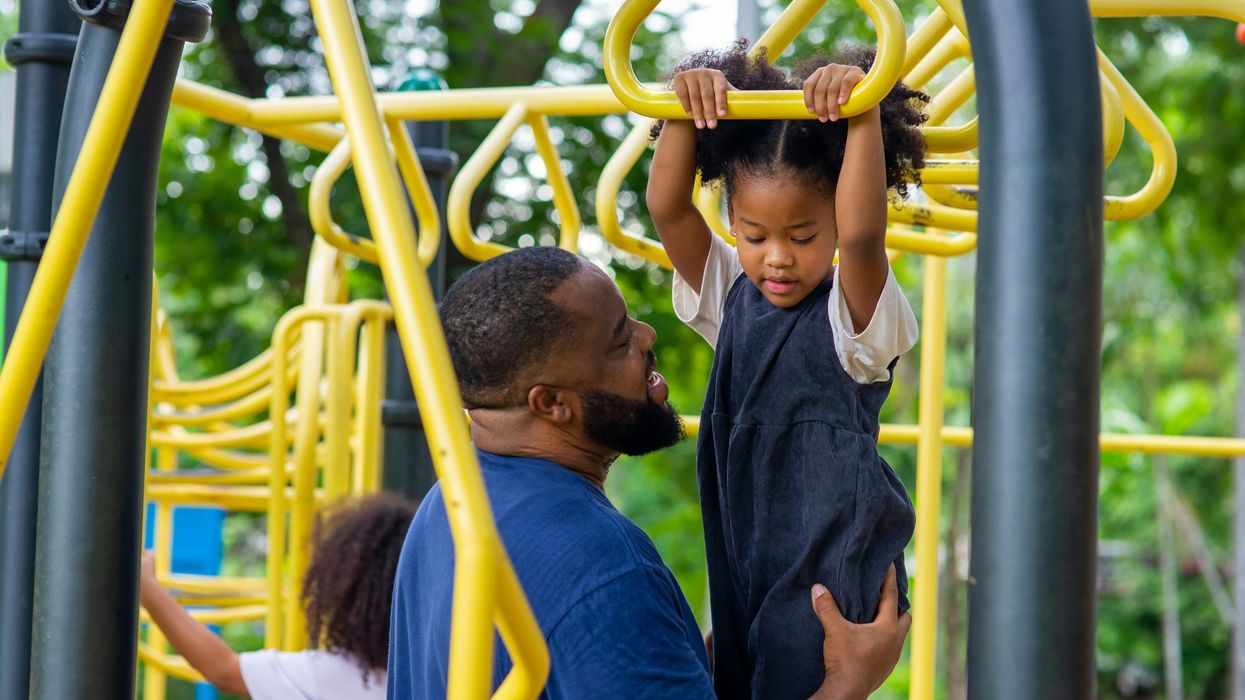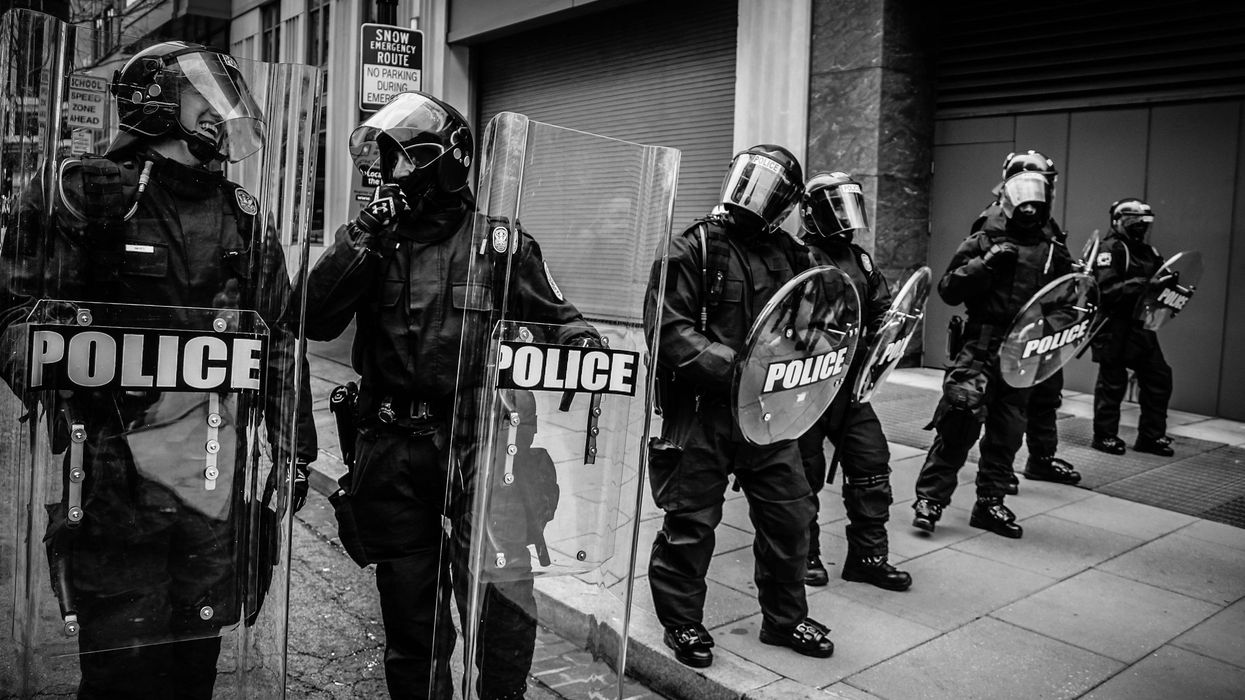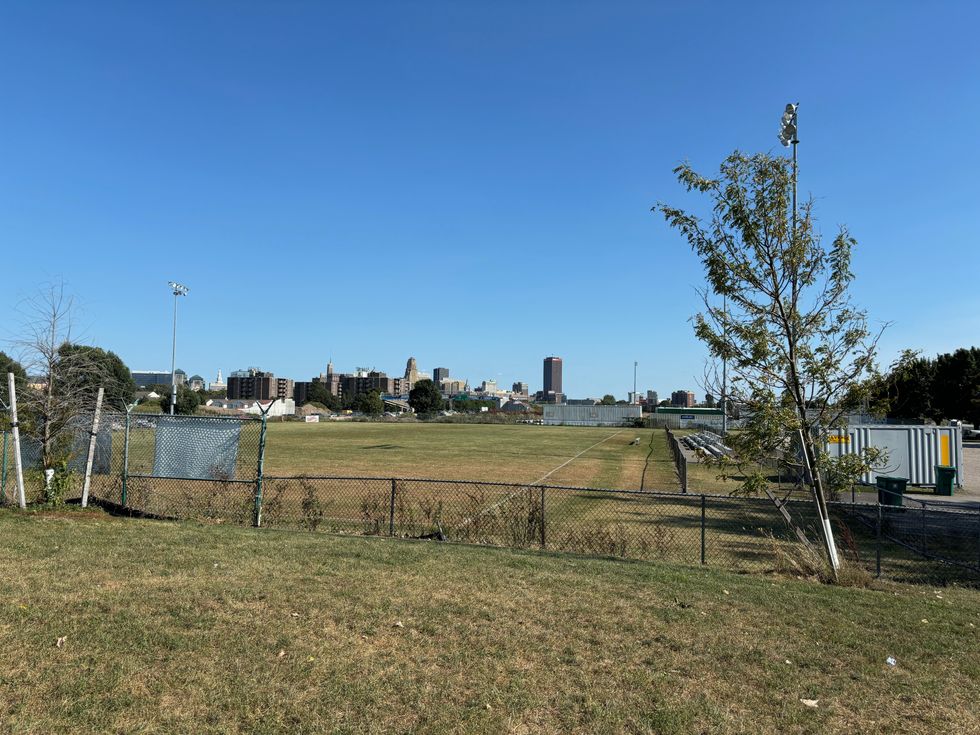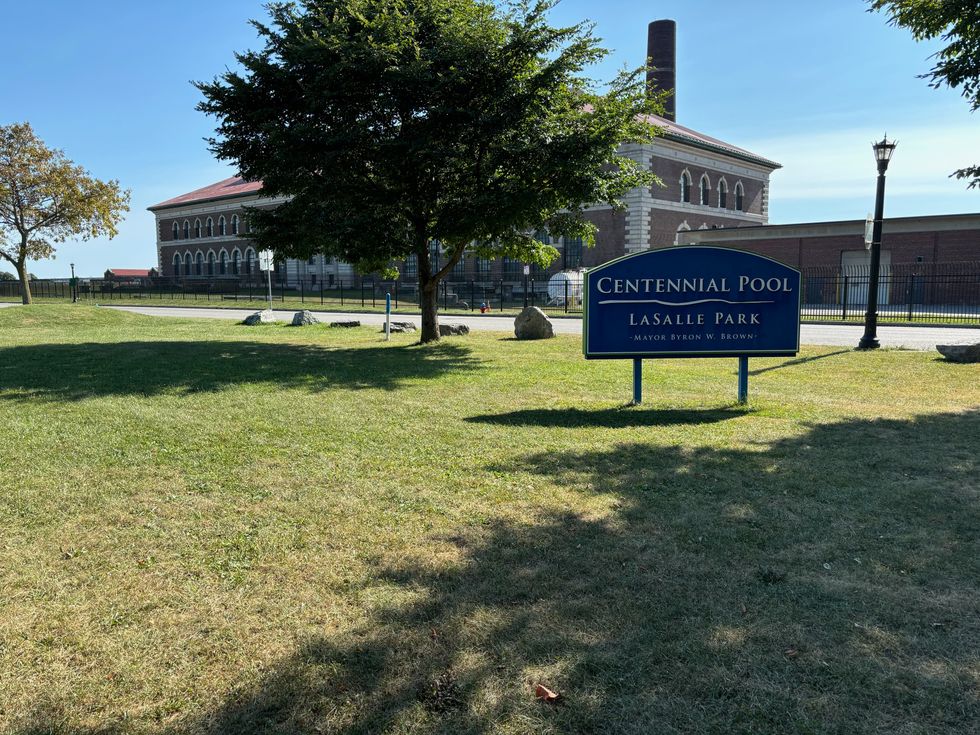
“What would a world without police look like?”
In 2017, when I was 23 years old, I found myself in a room full of other Black and Brown Buffalonians who were part of a collective discussing this question. We held political education meetings to develop a shared language and political vision so as a collective we could alter policing in Buffalo, NY, and beyond. While others found themselves able to imagine what the world would look and feel like, if policing, surveillance and militarization disappeared, I struggled.
To read a version of this story in Spanish click here. Haz clic aquí para leer este reportaje en español.
The knot in my stomach came from the fact that I come from a family of cops – my mom, my grandfather, my cousins, my uncles – all were or still are cops. As you can imagine, me, the grand-daughter and daughter of former New York City Police Department (NYPD) officers, found it difficult to answer this question. Growing up in a family connected to the NYPD, I wasn’t taught to question how policing came to be, let alone what a world without it would look like. For most of my life I took it as something that could not be changed; as well as something that was a public good. But in 2012, during my senior year of high school, Trayvon Martin was murdered. His murder challenged the idea that my neighborhood, the suburbs of Long Island, or even my class status would keep me safe. Then in college Michael Brown, Tamir Rice, Eric Garner, Freddie Gray and Alton Sterling were murdered. Each time I learned about another Black person being killed by the police, their deaths chipped away at what I had been told about policing in the United States. While I learned more about the harms of policing after each of these murders, I had never considered what a world without police would look like until that day in 2017.
Seven years later, I am still thinking about this question, especially in the way it connects to the relationship between policing and our surroundings, both natural and built. If you think about it, throughout history policing has shaped people’s relationships to different environments. From loitering laws to practices barring people from accessing certain establishments because of identities they hold, policing can be understood not just as an institution, but as a set of practices that reinforce inequalities.
In this sense, there is a more subtle and nefarious form of policing that everyday people engage in: citizen-based policing. It relies on the use of emergency (9-1-1) and non-emergency (3-1-1) phone calls to try and reduce behaviors a group of people believe to be unfit, often in public spaces like parks and the outdoors. In New York City, researchers have found that wealthier, white residents moving into majority non-white neighborhoods are likely to call 3-1-1 to complain about loud music or noise. Media narratives and people choosing to physically occupy the space can reinforce it.
These calls can result not only in citations, but also increase the presence of police in a neighborhood. The over policing of non-white communities can lead to fines or summons’, arrest, but also as we have vividly seen over the past 12 years or so, death.
I’ve come to believe that to fully engage with the question of a world without police, we need to address the social ways we police and patrol our neighbors and greenspaces. While we all can engage in citizen-based policing, historically citizen-based policing has been used by white people to limit the access of Black and Brown people to public parks and other greenspaces, cutting them off from the mental, social and spiritual wellbeing green spaces provide. This way of policing perpetuates a history of exclusion of Black and Brown people from the outdoors.
A brief history of citizen-based policing and public parks

There is a longstanding and well-documented history of citizen-based policing in and around urban public parks in the United States. For decades, urban public parks were built to materialize the ideals and needs of white, upper-class people. For example, the social elites behind the creation of Central Park wanted a greenspace that would not only increase the value of their properties near the park but would provide a dedicated recreation and leisure space for white, wealthy people in the area. Long before Central Park was even an idea, Dutch settlers had the Lenape people removed from the area in 1626. Then in 1857, to realize the goal of a large, urban public park, the City of New York used its power to take control of private property for the purposes of public use to dismantle the Black settlement Seneca Village, a neighborhood that offered Black residents a refuge from discrimination.
Many parks in bustling industrial cities like Chicago or Baltimore followed the same process of removing people from an area to make way for parks that were meant to reinforce the white dominant class ideals.
Often, these processes contributed to Black and other oppressed communities losing access to greenspaces, creating what researchers have called a “nature gap”, a term that describes how low income and communities of color lack access to nature-based spaces. This has health and civic engagement implications for people. Despite this unjust exclusion, parks such as Washington Square Park (New York City) have been a site for protest dating as far back as 1834. Similarly, the People’s Park at UC Berkeley has been home to anti-war rallies and demonstrations since the 1960s.
Unfortunately, the same process of denying low income and communities of color from these spaces continues today through citizen policing. In 2018, a news story broke about Jennifer Schulte, a white woman who became known as “BBQ Becky”, who called the police on Black men barbecuing at a park in Oakland, California, because she believed that they were doing something inappropriate. Two years later, Amy Cooper, a white woman falsely accused Christian Cooper (not related), a Black birdwatcher, of threatening her life when he asked her to leash her dog in an area of Central Park where dogs are required to be leashed. Researchers of Chicago’s efforts to “revitalize parks” have found that youth of color living near the 606, an urban greenway, were often monitored by white residents to control their behaviors. In all of these examples, citizen-based policing pretends to reinforce public parks as “white spaces”, which leads to non-white people having to prove that they are credible enough to use and enjoy the space.
The case of La Salle Park

In my own research, I have learned firsthand from residents of Buffalo, NY, how the redevelopment of an urban public park can lead to increased policing and citizen policing. The 77-acre park where I develop my research includes baseball fields, soccer fields and picnic areas, and was built in 1932 on a former industrial lot. While originally named Centennial Park to celebrate Buffalo’s Centennial Celebration in 1932, the park would later be renamed after René-Robert Cavalier de La Salle (a French settler) but to this day is lovingly known as the “People’s Park,” as it was a gathering place for all people in the city for decades. Cultural events held at the park like the Puerto Rican Day parade or World Refugee Day reinforced it as a place that brought many kinds of people together as it is surrounded by mixed income and migration status neighborhoods. Even after the City’s Master Plan to reconfigure the park to include sports fields in 1998, it remained used and loved by the community.
This began to change in 2019. That year, the City of Buffalo received approximately $50 million dollars from Ralph Wilson Jr. Foundation to turn LaSalle Park into a “destination park”, or a park that usually has features such as playgrounds and trails that make someone want to travel to it.
For my study, I talked to seven long-time residents of the West Side of Buffalo who often frequented LaSalle Park. They recounted how the redevelopment led to an increased presence of the Buffalo police department. One of my study participants told me that “as a Black man, I actually feel really uncomfortable with the amount of police that I see trafficking along that area,” he said. “I don’t necessarily know the history of violence in LaSalle Park or what that looks like if that is a thing. But I know that I often feel just really uncomfortable, whenever me and my friends are down there. It feels like we’re being watched.”

The seven people I talked to for hours also believed that redevelopment led to the arrival of white, suburban residents who brought different ideals about public space. This led them to retreat from the park that they loved so much out of fear for their safety. As one of the residents said, “… it feels weird because I look at them looking at me like, ‘what am I doing here’?”
These experiences are sadly not unique to the residents of Buffalo who participated in my study. Urban public parks being redeveloped or in changing neighborhoods have been found to become visible representations of gentrification, as they are made in the image of those they want to attract, rather than the current users. As a result, the new park users monitor the behaviors and leisure of people they deem to not be of the community or engage with the space in the way that they agree, like “BBQ Becky”.
In recent years, much has been written about communities of color lacking access to public greenspaces. This work has highlighted how not having access to greenspaces such as parks can impact people’s health and well-being, linking access to parks is with improved mental health, reduced obesity, and lower blood pressure. But I think we need to transcend this research, and think about how greenspaces are related to citizenry, to a person’s right to be a participatory member of a community. Parks have been spaces for activism and spaces for social gatherings and celebrations, which means they’re places where political and cultural rights are realized. Even when people can access a park, if we are not attuned to the history of the place and the ways that parks are designed to reinforce oppressive ideals, potential social and political interactions are lost.
I am still developing my understanding of what a world without policing would look and feel like. What I do know is that green spaces such as public parks are not void of power, but rather are one manifestation of it. While we challenge the institution of policing, we must also interrogate the ways that we – yes, you and even me– can contribute to the policing of others. As scary as it may be, considering what a world without police would look like would mean bringing about a world that not only removes the physical police forces we have, but the social ways we police and patrol.
This essay was produced through the Agents of Change in Environmental Justice fellowship, a partnership between Environmental Health News and Columbia University’s Mailman School of Public Health. Agents of Change empowers emerging leaders from historically excluded backgrounds in science and academia to reimagine solutions for a just and healthy planet.





